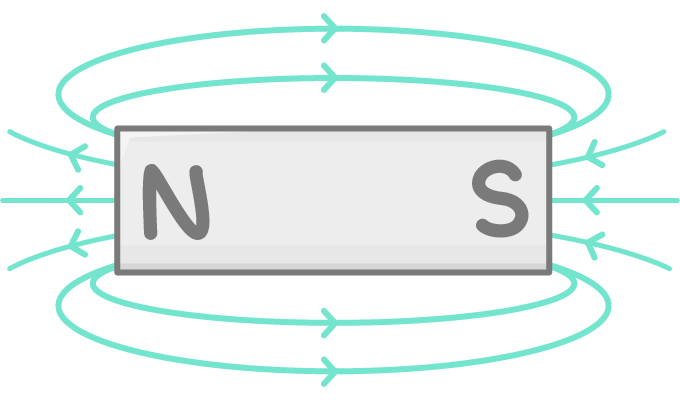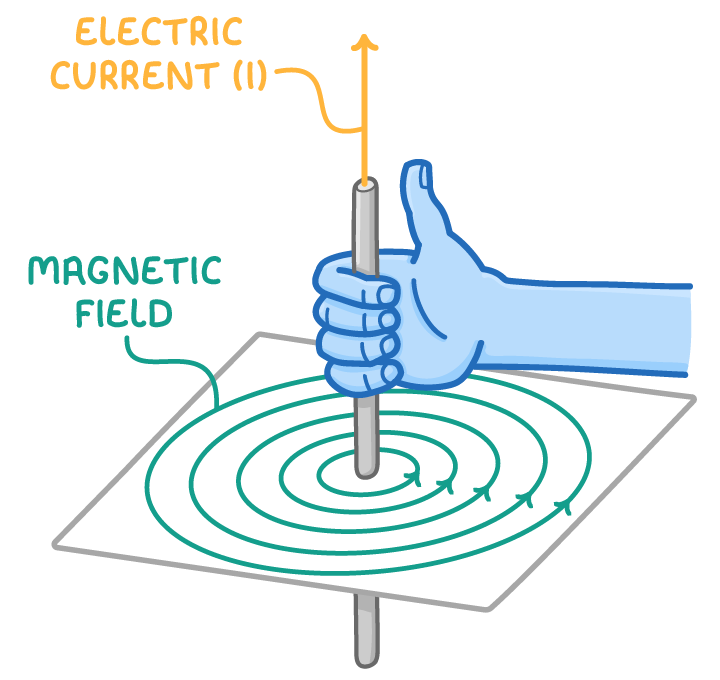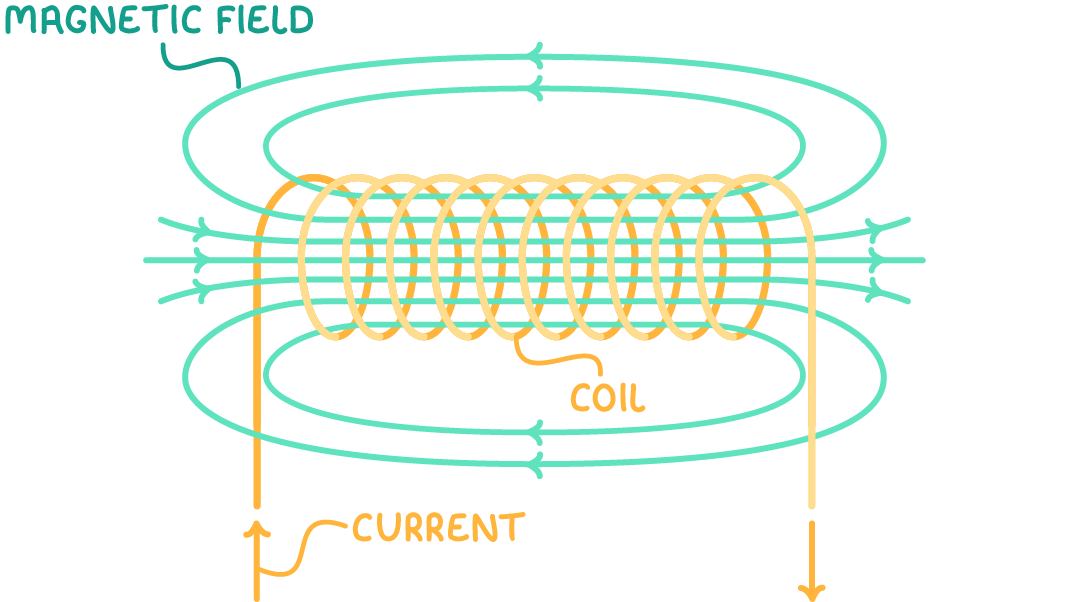Magnetic Fields
This lesson covers:
- Understanding that magnetic fields exist around permanent magnets and moving electric charges.
- Using magnetic field lines to represent magnetic fields.
- Applying the right-hand rule to determine the direction of magnetic fields.
- Recognising that current-carrying wires, coils, and solenoids generate magnetic fields.
- Determining the strength and direction of these fields.
Magnetic fields around permanent magnets and moving charges
Magnetic fields are invisible areas of magnetic force present around magnets and in the vicinity of moving electric charges, such as electrons flowing in a wire. These fields can attract or repel other magnets and affect magnetic materials within their reach.
To visualise these fields, we use magnetic field lines:
- These lines emerge from a magnet's north pole and loop around to enter its south pole.
- The closeness of the lines indicates the strength of the magnetic field: the closer they are, the stronger the field.
- Fields with lines that are far apart represent weaker magnetic forces.

A uniform magnetic field is characterised by parallel lines that are evenly spaced throughout the field, indicating consistent field strength and direction across the area.

Magnetic field due to an electric current

A circular magnetic field is created around a conductor when it carries an electric current.
In the case of a long, straight wire:
- The magnetic field forms concentric circles around the wire.
- The direction of these magnetic fields can be determined by the right-hand grip rule, where the thumb points in the direction of the current and the fingers curl in the direction of the magnetic field lines.
Adding more loops of wire into flat coils or solenoids focuses the magnetic field lines through the centre, strengthening the magnetic field inside.

Magnetic field strength
The strength of the magnetic field in the centre of coils or solenoids can be increased by:
- Adding more loops or turns to the coil (increasing N).
- Decreasing the cross-sectional area of the coil (decreasing A).
- Increasing the current flowing through the coil (increasing I).
Inside solenoids, the packing of the field lines closely together creates a strong, uniform magnetic field internally, while the external field diminishes rapidly.